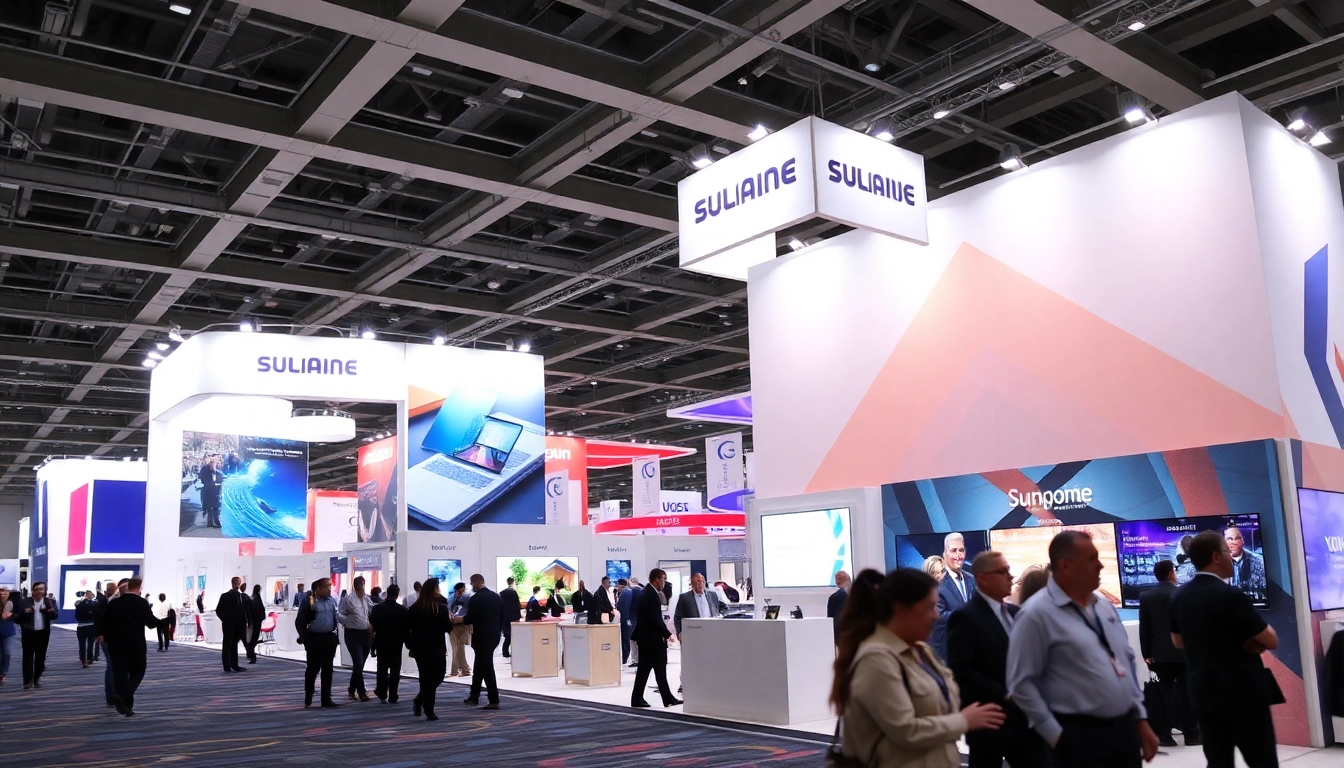Understanding the Role of Tradeshow Displays in Event Marketing
In the competitive landscape of modern business, effective event marketing is essential for brands seeking to maximize their visibility and engagement at trade shows. Central to this effort are tradeshow displays — the physical elements that attract attendees, communicate brand value, and generate leads. These displays are not just mere backdrops; they are strategic tools crafted to leave a lasting impression on visitors and differentiate your booth from countless others vying for attention.
Defining tradeshow displays and their importance
Tradeshow displays encompass a broad range of visual merchandising tools, including banners, signage, digital screens, pop-up exhibits, and custom structures. Their primary purpose is to create a cohesive, eye-catching environment that represents your brand identity while effectively conveying your key messages. An impactful tradeshow display acts as a visual handshake—inviting, memorable, and reflective of your company’s values and offerings.
Given that approximately 86% of attendees often make purchasing decisions based on the visual appeal and messaging of booth displays, their importance cannot be overstated. A well-designed booth not only draws the crowd but also fosters meaningful engagement, leading to increased brand recognition, valuable leads, and ultimately, heightened ROI.
Key benefits of eye-catching booth signage
Effective signage is the cornerstone of successful tradeshow displays. Eye-catching booth signage offers several benefits:
- Visibility: Bright, color-rich signs increase booth visibility from across the exhibition hall, attracting foot traffic amidst a sea of competitors.
- Brand Reinforcement: Consistent signage reinforces your brand identity, making your company instantly recognizable and memorable.
- Communication Clarity: Clear, concise messages quickly inform visitors what your company offers, reducing confusion and piquing interest.
- Professionalism and Credibility: Well-designed signage signals quality and professionalism, instilling confidence in potential clients and partners.
Common types of tradeshow display options to consider
Choosing the right type of display depends on your brand, goals, and budget. Common options include:
- Banner Stands: Portable and versatile, ideal for quick setup and highlighting key messages.
- Tabletop Displays: Compact solutions perfect for small spaces or supplementary branding.
- Pop-Up Displays: Large fabric or graphic backgrounds that create an immersive visual impact.
- Modular Exhibits: Customizable structures offering flexibility for larger, elaborate booths.
- Digital Signage: Interactive screens that combine multimedia elements for dynamic engagement.
Design Principles for Effective Tradeshow Displays
Creating a visually compelling booth layout
An effective booth layout balances aesthetics with functionality. Prioritize clear sightlines, ensuring visitors can effortlessly see your branding from a distance. Use natural flow principles to guide attendee movement, placing high-impact visuals at entry points. Incorporate diverse display elements that complement each other—such as banners, digital screens, and product demos—to create an engaging environment that invites exploration.
Utilizing branding and messaging effectively
Your branding should be seamlessly integrated into every aspect of your display. Consistent use of colors, logos, and typography helps reinforce brand recognition. Develop a compelling core message and ensure it is prominently displayed on signage and graphics. Use visuals that evoke emotion or curiosity, leading visitors to engage further with your offerings.
Incorporating innovative display technology
Emerging technologies, such as augmented reality, interactive touchscreens, and virtual tours, are transforming tradeshow experiences. These tools not only draw attention but also provide deeper engagement. For example, AR applications can allow visitors to visualize products in their environment, while interactive screens can capture visitor data more effectively. Staying abreast of technological advances ensures your booth remains current and captivating.
Implementation Tips for Standout Tradeshow Displays
Planning and logistics for successful setup
Effective planning begins months before the event. Consult with designers to develop detailed layouts and order necessary materials early. Consider the logistics of transportation, setup, and teardown. Allocate time for installation and testing to prevent surprises on the event day. Assign roles clearly, from booth setup to staffing, to ensure smooth operations.
Engaging staff and interactive elements
Equip your team with training on brand messaging and engaging communication techniques. Encourage staff to demonstrate enthusiasm and approachability. Incorporate interactive elements such as product demos, contests, or digital presentations to foster face-to-face interaction and sustain visitor interest.
Best practices for on-site management and adjustments
Monitor booth performance throughout the event. Make real-time adjustments—rearranging displays, refining messaging, or deploying additional staff—to optimize visitor engagement. Maintain an inviting, professional appearance and ensure all materials are well-stocked and functional.
Measuring Success and Optimizing Future Displays
Tracking visitor engagement and leads
Utilize digital tools such as QR codes, lead capture apps, and visitor surveys to quantify engagement. Measure booth traffic, booth dwell time, and the quality of interactions to assess effectiveness. Establish clear KPIs aligned with your objectives—whether brand awareness, lead generation, or sales conversions.
Analyzing post-event feedback
Gather feedback from staff and attendees to identify strengths and areas for improvement. Review data collected during the event to understand visitor preferences and behaviors. Conduct debrief sessions to incorporate insights into future design iterations.
Iterating designs for improved results
Leverage insights gained to refine your booth design, messaging, and engagement tactics. Test new visual elements or tech innovations at subsequent events. Continuously evolve your display strategy based on measurable outcomes, ensuring each trade show is more successful than the last.
Emerging Trends and Industry Insights in Tradeshow Displays
Integrating sustainability in booth design
Eco-friendly materials, reusable structures, and energy-efficient digital displays are increasingly important as brands prioritize sustainability. Incorporate recyclable signage, minimal packaging, and LED lighting to reduce environmental impact, aligning your brand with responsible practices.
The rise of digital and multimedia displays
Digital innovations are redefining booth engagement through immersive videos, interactive kiosks, and live social media feeds. These tools enhance storytelling, enable customization, and provide real-time analytics, elevating your presence beyond static signage.
Future innovations shaping tradeshow marketing
Looking ahead, advancements such as augmented reality glasses, AI-powered personalization, and holographic displays promise even more immersive and targeted experiences. Embracing these innovations today positions your brand at the forefront of tradeshow marketing evolution.
